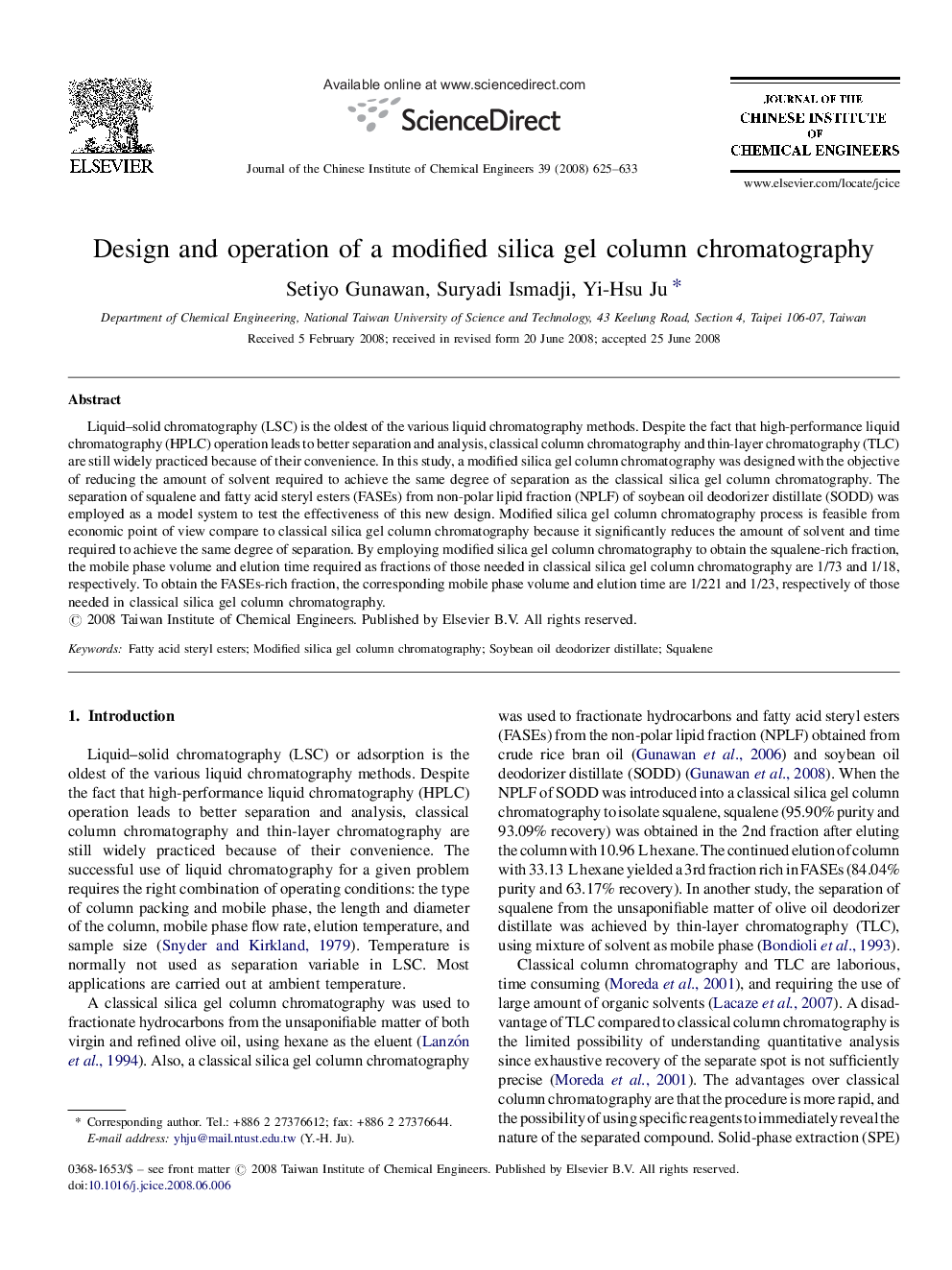| Article ID | Journal | Published Year | Pages | File Type |
|---|---|---|---|---|
| 217655 | Journal of the Chinese Institute of Chemical Engineers | 2008 | 9 Pages |
Liquid–solid chromatography (LSC) is the oldest of the various liquid chromatography methods. Despite the fact that high-performance liquid chromatography (HPLC) operation leads to better separation and analysis, classical column chromatography and thin-layer chromatography (TLC) are still widely practiced because of their convenience. In this study, a modified silica gel column chromatography was designed with the objective of reducing the amount of solvent required to achieve the same degree of separation as the classical silica gel column chromatography. The separation of squalene and fatty acid steryl esters (FASEs) from non-polar lipid fraction (NPLF) of soybean oil deodorizer distillate (SODD) was employed as a model system to test the effectiveness of this new design. Modified silica gel column chromatography process is feasible from economic point of view compare to classical silica gel column chromatography because it significantly reduces the amount of solvent and time required to achieve the same degree of separation. By employing modified silica gel column chromatography to obtain the squalene-rich fraction, the mobile phase volume and elution time required as fractions of those needed in classical silica gel column chromatography are 1/73 and 1/18, respectively. To obtain the FASEs-rich fraction, the corresponding mobile phase volume and elution time are 1/221 and 1/23, respectively of those needed in classical silica gel column chromatography.
